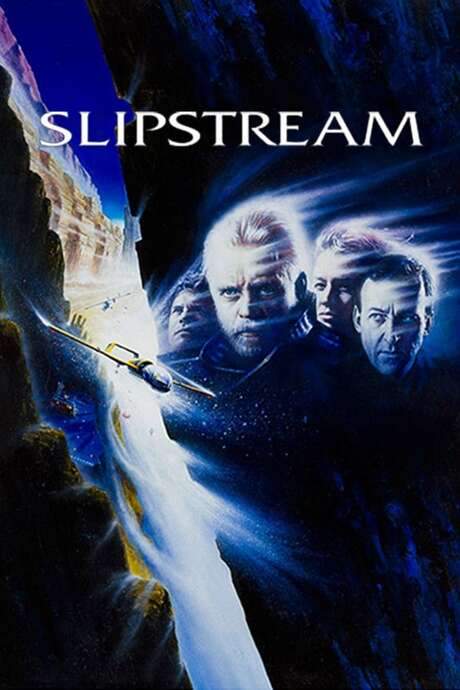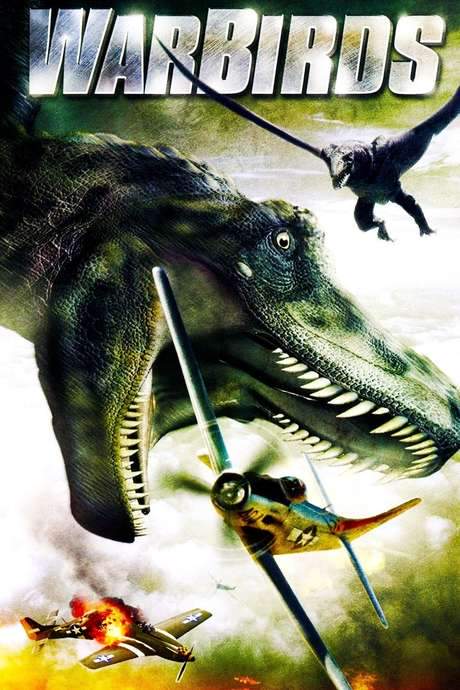
Wing Commander
Year: 1999
Runtime: 100 mins
Language: English
Budget: $30M
In the mid‑27th century the Terran Confederation fights the alien Kilrathi Empire. When the Kilrathi capture a navigation device that could lead them to Earth, the Confederation’s hope rests on three pilots: Lieutenant Christopher Blair, wingman Todd “Maniac” Marshall, and Commander Jeanette “Angel” Deveraux. They race to intercept the fleet, battling odds, rivalries and inner fears to save humanity.
Warning: spoilers below!
Haven’t seen Wing Commander yet? This summary contains major spoilers. Bookmark the page, watch the movie, and come back for the full breakdown. If you're ready, scroll on and relive the story!
Wing Commander (1999) – Full Plot Summary & Ending Explained
Read the complete plot breakdown of Wing Commander (1999), including all key story events, major twists, and the ending explained in detail. Discover what really happened—and what it all means.
In the year 2654, humanity fights a long and brutal interstellar war against the Kilrathi Empire, a feline-aligned regime bent on the total eradication of humankind. The Kilrathi raid Pegasus Station, a remote but strategically vital Confederation outpost, seize a critical navigation computer, and from that stolen data they pinpoint Earth as the next target. As the alarm bells ring, Admiral Geoffrey Tolwyn makes a tough choice: withdraw the Terran fleet to defend Earth, even if the call comes with a narrow window and the fleet would arrive two hours too late. The plan hinges on a dangerous delay action that could buy Earth the time it needs to steel its defenses.
Enter Lieutenant Christopher Blair, a fresh-faced pilot with a rare gift. Tolwyn tasks him with carrying orders to the carrier TCS Tiger Claw, a frontline warship in the Vega Sector commanded by Captain Jason Sansky. Blair is paired with the newly minted crew of the Tiger Claw, including the brash young pilot Lt. Todd ‘Maniac’ Marshall and a lot of unsure nerves as they prepare to join the seasoned hands already aboard. Their voyage aboard the humble supply vessel Diligent, under the watchful eye of Captain James Taggart in reality a key intelligence figure, is a crash course in the pressures of combat and the heavy expectations that come with arriving to a unit in crisis.
Upon reaching the Tiger Claw, Blair confronts a patchwork of personalities and loyalties. The ship’s wing is led by the formidable Lt. Cmdr. Angel Devereaux, and the crew, including the seasoned Cdr. Paul Gerald, must quickly decide whether to trust a pilot who carries a legacy marked by the Pilgrim Wars—the human explorers whose innate navigational sense could be the difference between catastrophe and survival. Blair’s arrival is not welcomed by everyone; he must navigate not only enemy fire but also suspicion and discipline within a crew that has weathered hard losses and hard choices. Yet Blair’s skill becomes immediately evident, most notably when Captain Taggart acknowledges his exceptional ability after Blair manually corrects a critical navigation error that the damaged ship would have otherwise failed to survive.
As Blair and Marshall adapt to their new unit, a personal bond forms between Marshall and Lt. Rosie Forbes, a pilot who shares Blair’s sense of duty and courage—until tragedy interrupts their fragile camaraderie. Forbes is caught in the line of fire during a fierce dogfight with an advanced Kilrathi squadron, and her fighter is critically damaged while attempting to land on Tiger Claw’s deck. The accident costs Forbes her life and leaves a wound that stings Marshall and the rest of the crew, testing Devereaux’s leadership and resolve. The losses sharpen the crew’s focus and deepen the sense that even small mistakes can have enormous consequences in the heat of war.
The mission intensifies when the Tigers Claw receives word that a Kilrathi communications ship—the vessel that houses the stolen navigation data—must be boarded and its secrets retrieved. Blair and Devereaux undertake a hazardous strike into Kilrathi space to seize the stolen computer and uncover the coordinates that will enable Earth to anticipate the Kilrathi jump into the solar system. Their reconnaissance reveals the grim reality: if the Kilrathi fleet is not neutralized, Earth will be overwhelmed when the enemy fleets attempt to make their own gravitational-assisted jumps toward the home world. The Tiger Claw suffers severe damage in the action, forcing a dramatic decision: Blair and Devereaux must attempt a desperate return to Earth in two fighters, armed with Blair’s Pilgrim heritage—a latent navigational knack that allows him to “feel” the way through space without a computer.
Before Blair departs, a startling revelation changes the trajectory of the mission. Cmmdre. James ‘Paladin’ Taggart, a respected commander aboard the Tiger Claw, discloses that he too is a Pilgrim. This revelation reframes the crew’s understanding of Blair’s abilities and the mission’s stakes, underscoring the personal and existential weight behind their duty. Blair’s innate sense of navigation becomes the lifeline Earth needs; his ability to calculate the jump by instinct enables him to guide the Tiger Claw’s fighters toward the perilous approach to Earth, a path that would be inaccessible to any pilot relying solely on conventional instruments.
With Devereaux’s fighter knocked offline but still functioning, she makes a conscious choice to press Blair onward rather than risk a rescue that would jeopardize the mission. Blair uses his Pilgrim sense to steer toward Earth, his fighter’s fuel dwindling as he closes the distance to the planet. He transmits the crucial tactical data that Earth’s fleet requires to intercept and defeat the incoming Kilrathi wave before it can begin its attack. Pursued by a Kilrathi command vessel of far greater mass, Blair and his craft are drawn into a gravity well they had previously encountered, the trap designed to pull in any ship that fails to navigate with precision.
In a high-stakes gambit, Blair pulls away at the last moment, flooring the Kilrathi ship’s hopes as the gravity well takes hold of the larger vessel. Earth’s fleet, acting on the information Blair provides, capitalizes on the Kilrathi error and destroys the threat without a direct engagement in space. The Earth defense proves overwhelming, and the Kilrathi fleet is neutralized almost before it can properly form its formation. The victory is not simply a collection of tactical maneuvers; it’s a testament to human resilience, the courage to risk everything, and the willingness to rely on an unconventional navigator when every moment is a matter of survival.
The rescue mission completes as a Rescue & Recovery pilot from the Earth fleet arrives to retrieve Blair as his fighter’s systems fail and fuel runs dry. Taggart, recognizing both the sacrifice and the need to preserve their most valuable asset, secures Devereaux’s own rescue from the Diligent, culminating in a moment of relief and relief-tinged longing as Blair and Devereaux reunite aboard the Tiger Claw. Their reunion is signaled not just by a kiss but by the sense that, despite the losses and the heavy burdens they carry, the human spirit endures even in the bleakest hours of war. The film closes with a quiet affirmation: humanity has faced extinction and prevailed, not because of weapons alone, but because of the decisive courage of individuals who trust their instincts, their training, and the bonds they’ve built in the crucible of combat.
In the end, the mission’s success hinges on the fusion of seasoned leadership and fearless improvisation. Lessons of leadership, sacrifice, and the power of belief in one another echo through the Tiger Claw’s decks: a reminder that even in a universe where dangers loom at every warp, humanity’s most potent weapon remains the willingness to push beyond what seems possible when the stakes are highest.
Last Updated: October 07, 2025 at 09:41
Unlock the Full Story of Wing Commander
Don't stop at just watching — explore Wing Commander in full detail. From the complete plot summary and scene-by-scene timeline to character breakdowns, thematic analysis, and a deep dive into the ending — every page helps you truly understand what Wing Commander is all about. Plus, discover what's next after the movie.
Wing Commander Timeline
Track the full timeline of Wing Commander with every major event arranged chronologically. Perfect for decoding non-linear storytelling, flashbacks, or parallel narratives with a clear scene-by-scene breakdown.

Characters, Settings & Themes in Wing Commander
Discover the characters, locations, and core themes that shape Wing Commander. Get insights into symbolic elements, setting significance, and deeper narrative meaning — ideal for thematic analysis and movie breakdowns.

Similar Movies to Wing Commander
Discover movies like Wing Commander that share similar genres, themes, and storytelling elements. Whether you’re drawn to the atmosphere, character arcs, or plot structure, these curated recommendations will help you explore more films you’ll love.
Explore More About Movie Wing Commander
Wing Commander (1999) Scene-by-Scene Movie Timeline
Wing Commander (1999) Movie Characters, Themes & Settings
Wing Commander (1999) Spoiler-Free Summary & Key Flow
Movies Like Wing Commander – Similar Titles You’ll Enjoy
Wings (1929) Plot Summary & Ending Explained
Alien Convergence (2017) Detailed Story Recap
Sky Fighter (2019) Detailed Story Recap
Alien Warfare (2019) Story Summary & Characters
Robotech: The Shadow Chronicles (2006) Film Overview & Timeline
Battlespace (2006) Spoiler-Packed Plot Recap
Spacehunter: Adventures in the Forbidden Zone (1983) Plot Summary & Ending Explained
Slipstream (1989) Film Overview & Timeline
Royal Space Force - The Wings of Honneamise (1987) Plot Summary & Ending Explained
Warbirds (2008) Complete Plot Breakdown
Star Command (1996) Film Overview & Timeline
The Starfighters (1964) Full Summary & Key Details
Winged Victory (1944) Detailed Story Recap
Fighter Squadron (1948) Complete Plot Breakdown
Starship Invasions (1977) Full Summary & Key Details

















